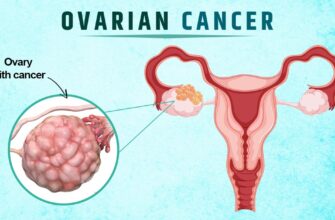For millions worldwide, the persistent ache of osteoarthritis is a daily companion, diminishing quality of life and limiting movement. While surgical solutions and various medications offer some reprieve, they often come with their own set of challenges. Now, groundbreaking research from South Korea suggests an unexpected ally in the fight against joint pain: low-dose radiation therapy.
The Persistent Challenge of Osteoarthritis
Osteoarthritis, particularly in the knees, is the most common form of arthritis. Characterized by the gradual breakdown of joint cartilage, it leads to pain, stiffness, and significantly reduced mobility. Patients often navigate a complex and often frustrating treatment landscape, from over-the-counter pain relievers and steroid injections to, eventually, total joint replacement surgery—a significant undertaking with its own recovery period and risks.
The quest for a “golden mean” – a treatment that effectively bridges the gap between palliative care and invasive surgery – has been a long-standing goal for medical professionals and sufferers alike. It appears scientists may have just stumbled upon a truly remarkable candidate.
Radiation: From Destroyer to Healer?
When most people hear “radiation therapy,” their minds likely jump to the aggressive treatments used to combat cancer. It`s a powerful tool designed to destroy malignant cells. The idea of using it to relieve chronic pain, especially in a non-cancerous context like arthritis, might seem counterintuitive, perhaps even a touch ironic. Yet, the science is beginning to tell a different story.
Recent findings, presented at the annual conference of the American Society for Radiation Oncology (ASTRO), reveal that very low doses of radiation—significantly less than those used in oncology—can have a profound anti-inflammatory effect, which is key to alleviating arthritis pain.
A Deeper Look at the Breakthrough Study
The pivotal research involved 114 patients suffering from knee osteoarthritis. Participants were carefully randomized into three distinct groups:
- Two groups received differing, low doses of radiation therapy.
- One group received a placebo treatment, acting as the control to ensure the observed effects were indeed due to the radiation.
The results were compelling. After a series of six procedures, patients in the higher-dose radiation group experienced a significant reduction in pain and a marked improvement in their physical function. Crucially, these positive outcomes were observed without the adverse side effects typically associated with higher-dose radiation. This suggests a careful balance between therapeutic benefit and patient safety was achieved.
As radiation oncologist Ben Heck Kim from Seoul National University reportedly summarized, this method could indeed be the “golden mean” that many patients have been waiting for, especially those for whom conventional medications or injections have proven insufficient.
Understanding the “Low-Dose” Difference
It`s vital to emphasize the “low-dose” aspect. The radiation levels employed in this study are described as being tens of times smaller than those administered during cancer treatment. This distinction is critical for understanding the safety profile of this potential therapy. At these meticulously reduced levels, radiation appears to modulate inflammatory responses rather than causing cellular destruction, making it a viable therapeutic option for chronic inflammatory conditions.
This approach moves beyond simply masking pain, targeting the underlying inflammatory processes that contribute to the discomfort and joint damage in osteoarthritis. It presents a novel way to address the disease without the drastic measures of invasive surgery.
What This Means for Arthritis Sufferers
The implications of this research are significant. Imagine a future where individuals struggling with chronic knee pain have a safe, effective, non-surgical option that can dramatically improve their quality of life. This could be particularly transformative for:
- Patients who have exhausted other non-surgical treatments without adequate relief.
- Individuals who are not candidates for surgery due to other health conditions.
- Those who wish to postpone or avoid invasive joint replacement procedures, seeking an intermediate solution.
While this initial study is incredibly promising, further research and larger-scale clinical trials will be necessary to fully establish low-dose radiation therapy (LDRT) as a standard treatment. However, the early signs are exceptionally encouraging, offering a genuine beacon of hope for a condition that affects so many.
The journey to find ever-better ways to manage chronic conditions is relentless. This latest discovery reminds us that sometimes, the solutions we seek might be found by looking at established tools through a completely new lens—transforming a perceived agent of destruction into a subtle, precise healer for persistent pain.








